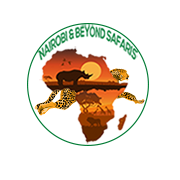By: Musyoka Kioko, Digital Marketer, Nairobi, and Beyond Safaris.
Date: 21st February 2023.
Located in Tanzania, Mount Kilimanjaro is Africa’s tallest mountain at about
5,895 meters (19,340 feet). It is the largest free-standing mountain rise in the
world, meaning it is not part of a mountain range. The mountain is also called a stratovolcano (a
term for an enormous volcano made of ash, lava, and rock). Kilimanjaro has three
cones: Kibo, Mawenzi, and Shira. Kibo is the summit of the mountain and the
tallest of the three volcanic formations. While Mawenzi and Shira are extinct, Kibo
is dormant and could erupt again. Scientists estimate that the last time it erupted
was 360,000 years ago. The highest point on Kibo’s crater rim is Uhuru, the
Swahili word for “freedom.” The mountain is also known for its snow-capped
peak; however, scientists warn that it might disappear within the next 20 years.
In 1889, German geographer Hans Meyer and Austrian mountaineer Ludwig
Purtscheller became the first person on record to reach the summit of Kilimanjaro.
Since then, Kilimanjaro has become a popular hiking spot for locals and tourists.
Because mountaineering gear and experience are not needed to reach the peak, tens
of thousands of climbers descend the mountain yearly. The climb is still
dangerous, however, because of the risk of altitude sickness—a condition climbers
experience if they ascend too quickly, which can be deadly if not treated right
away.
There are seven interesting facts about this mountain:
- Glaciers
The glaciers on Kilimanjaro are estimated to be around 11,700 years old. In the
late 19th century, the entire summit of Kibo was covered in glacial ice, which isn’t
today. According to a study by the European Geosciences Union, between 1912
and 2011, as much as 85% of the glacial ice disappeared. To put this into numbers:
in 1912, the coverage was 11.4 square kilometers. By 2011 a mere 1.76 square
kilometers of glacial ice remains. It is estimated that if climate conditions
continue, there will be no ice cap on Kibo by 2060.
A pretty frightening thought! - 2. Seven Summits.
Being the tallest mountain in Africa gives Mt. Kilimanjaro status as one of the
“Seven Summits” – the highest mountain on each of the seven continents. Long
been a goal of many mountaineers, conquering all of these is quite a feat.
The other six are: - Asia: Mount Everest (8,848 meters)
- South America: Mount Aconcagua
- North America: Mount McKinley – also known as Denali (6,194 meters)
- Europe: Mount Elbrus (5,642 meters)
- Antarctica: Mount Vinson (4,892 meters)
- Australasia: Mount Kosciuszko (2,228 meters)
3. First Woman To Summit: Sheila MacDonald
The first woman to get to the summit was a Scottish lady who had spent a lot of
time scaling Scottish peaks with her father in her childhood. After climbing Mount
Etna in Sicily, visited Africa to visit relatives. She joined a group of
adventurers and embarked on her expedition up Kili. Reportedly, she drank
champagne and whiskey to keep her strength up – even after her traveling companions abandoned their attempt at the summit, she pushed on, reportedly
succeeding on the 27th of September, 1927.
- East African Mountain Club
The early predecessor of modern tourism, the East African Mountain Club, was
formed in the 1920s by Richard Reusch and Clement Gillman. Richard Reusch was
the 7th person to sign the register on the summit and reportedly the first person to
see the Ash Pit –named the Reusch Crater after him. Gillman’s Point is named
after Clement Gillman. Together, they built the first huts on Kilimanjaro at
strategic points to allow climbers to rest and acclimatize before continuing their
journey. They trained the first mountain guides and ran the first commercial
climbs. The East African Mountain Club ran all the expeditions up Kilimanjaro
until the Tanzanian Government took over in 1973. They predominantly used what
is now the Marangu route. - Routes to the Summit
Moving on from history to more modern times, there are currently seven official
routes up the mountain to the summit. Climbers have to use one of these routes, it
is not possible to make your route!
From the south:
Marangu
Machame
Umbwe
From the west:
Lemosho
Shira
Northern Circuit (which starts in the west but circles around the north)
From the north:
Rongai
All these routes end up at one of three main base camps from which the summit
attempt starts. The three main routes to the summit are:
From the south via Stella Point (the most usual route)
From the east via Gillman’s Point
From the west up the more technical Western Breach
- Oxygen and Altitude
At 19,340 feet, there is approximately half the oxygen in the air than at sea level.
This is because there is less atmospheric pressure as you get higher up. The actual
air still contains 20.8% oxygen. It is not that there is less oxygen; it is less
available. This lower atmospheric pressure, combined with less available oxygen,
causes complications such as Acute Mountain Sickness, High Altitude Pulmonary
Edema, and High Altitude Cerebral Edema. - Summit Success Rates
Each year, at least 30,000 people attempt to climb Kilimanjaro. That’s a lot, right?
So you’d think the summit would be pretty crowded. You’d be wrong. It is hard to
get actual statistics about what percentage of people who set out to climb make it
to the summit. Kilimanjaro National Park does not publish these figures, so we rely
on evidence from other tour operators. We know that the longer routes have the
greatest success rates. This is because, by far, the biggest reason for people not
making the summit is due to complications with the altitude. Longer routes allow
more time for the body to acclimate, and well-acclimated climbers have the best
chance of success in the absence of medical conditions or injury.


